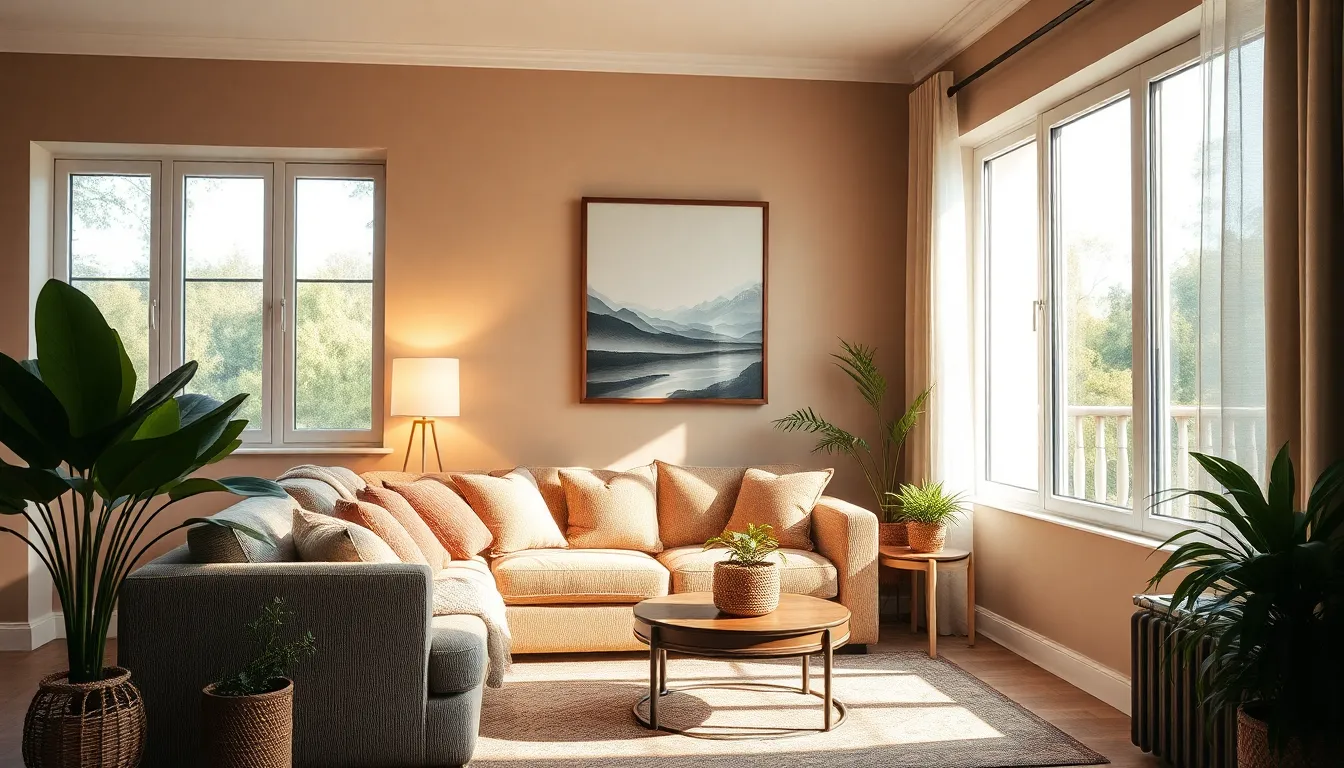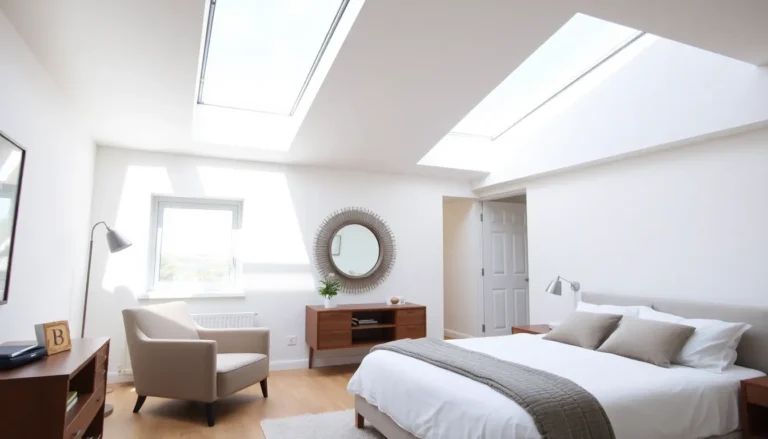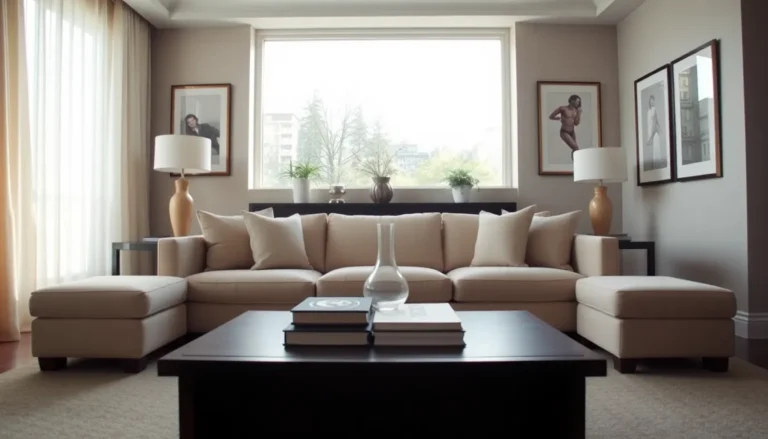In a world where stress seems to be the only constant, comfort-driven spaces are the cozy havens we didn’t know we needed. Imagine a place where the couch hugs you back, and the coffee is always just the right temperature. These spaces aren’t just about aesthetics; they’re about creating an atmosphere that wraps you in warmth and relaxation.
From homes that feel like a warm embrace to offices that inspire creativity without the stress, comfort-driven spaces are redefining how we experience our environments. It’s time to swap stiff furniture for plush cushions and fluorescent lights for soft, inviting glows. Get ready to discover how these spaces can transform everyday life into a delightful retreat, where comfort reigns supreme and stress takes a backseat.
Table of Contents
ToggleOverview of Comfort-Driven Spaces
Comfort-driven spaces focus on creating environments that enhance well-being and relaxation. These spaces often feature soft furnishings, warm colors, and ample natural light. Designers prioritize factors like ergonomics and aesthetic appeal to foster tranquility.
In homes, comfort-centered designs include cozy living areas with plush sofas and inviting decor. Office spaces adopt similar principles, incorporating comfortable seating and warm lighting to reduce stress. Research indicates that environments emphasizing comfort can boost productivity and overall satisfaction.
Ideas for promoting comfort extend to outdoor areas, where gardens and patios serve as retreats. Incorporating nature elements, like plants and water features, contributes to a soothing atmosphere.
Creating comfort-driven spaces involves thoughtful planning around layout and functionality. Open spaces allow for movement and connection, while designated quiet zones facilitate relaxation. An effective combination invites individuals to unwind and recharge.
Attention to sensory details enhances comfort as well. Using textiles like soft blankets and cushions adds tactile warmth. Incorporating scents through candles or essential oils can evoke calmness.
Ultimately, comfort-driven spaces prioritize individual needs by considering personal preferences and lifestyle. These environments act as sanctuaries in today’s fast-paced world, allowing for restorative experiences that help balance daily stresses.
Key Elements of Comfort-Driven Spaces

Comfort-driven spaces prioritize physical and emotional well-being. These environments enhance daily living, offering tranquility and relaxation.
Physical Comfort
Physical comfort stems from thoughtful design choices. Softer furnishings such as plush sofas, ergonomic chairs, and supportive mattresses encourage relaxation. Ample natural light plays a crucial role, promoting a welcoming atmosphere. Warm color palettes create a serene backdrop that invites repose. Flooring materials, like carpets and soft rugs, provide cushioning underfoot. Additionally, maintaining optimal temperatures ensures a cozy environment. Architectural elements that allow for spacious layouts enhance mobility and accessibility. When all these factors come together, they create an inviting space that supports restful experiences.
Emotional Comfort
Emotional comfort revolves around creating a sense of security and belonging. Incorporating personal elements, such as photographs or artwork, fosters connection to the environment. Calming scents, like lavender or vanilla, contribute to a soothing ambiance. Soft lighting, using dimmable fixtures or warm-toned bulbs, promotes relaxation and reduces stress. Accessibility to nature through indoor plants or outdoor views aids in emotional well-being. Designating quiet zones for mindfulness or reflection reinforces tranquility. Overall, these features collectively nurture a comforting atmosphere that supports mental health and fosters a positive experience.
Benefits of Comfort-Driven Spaces
Comfort-driven spaces significantly enhance well-being and productivity, providing vital support in everyday life.
Impact on Well-Being
Comfort-driven spaces improve both physical and emotional health. Thoughtfully designed environments stimulate relaxation and reduce stress. Warm colors, natural light, and soft furnishings create inviting atmospheres. Incorporating personal elements like photos enhances emotional connection and belonging. Calming scents from candles or essential oils promote tranquility. Access to nature through windows or green plants boosts mental clarity. These elements together foster a sense of security, leading to improved overall well-being.
Enhancing Productivity
Comfortable environments contribute directly to workplace productivity. Ergonomic furniture reduces discomfort and promotes focus. Access to natural light minimizes fatigue, allowing for extended periods of concentration. Creating designated quiet zones fosters uninterrupted work and creative thinking. Comfortable break areas encourage relaxation and rejuvenation, preventing burnout during demanding tasks. A well-designed workspace, infused with comfort, cultivates a culture of efficiency and enhances overall job satisfaction.
Design Principles for Comfort-Driven Spaces
Design principles for comfort-driven spaces focus on creating welcoming environments that enhance well-being. Two critical elements in achieving this are color and light, as well as furniture layout.
Color and Light
Color shapes the atmosphere of a space, influencing mood and perception. Soft, warm tones such as beige, pastel blues, and gentle greens encourage relaxation. Natural light plays a vital role by brightening interiors and promoting a sense of connection to the outdoors. Strategically placing large windows or incorporating skylights enhances these benefits. Warm lighting fixtures soften harsh illumination, creating cozy spots for comfort. Using a combination of colors and lights establishes tranquil settings, boosting emotional well-being in both residential and commercial spaces.
Furniture and Layout
Furniture selection significantly affects comfort levels within spaces. Prioritizing ergonomic pieces supports physical well-being while enhancing aesthetic appeal. Arranging furniture to facilitate movement and create intimate gathering areas fosters connection. Designating quiet zones promotes relaxation and mental clarity, making spaces adaptable to various activities. Incorporating plush seating options and soft textiles adds comfort to these areas. Overall, thoughtful layout and carefully chosen furniture contribute to creating environments that prioritize individual needs and enhance overall comfort.
Embracing comfort-driven spaces can significantly enhance daily life. These thoughtfully designed environments promote relaxation and well-being by prioritizing both physical and emotional comfort. By integrating elements like soft textiles, warm colors, and natural light, individuals can create personal sanctuaries that alleviate stress.
As more people recognize the value of comfort in their homes and workplaces, the demand for these soothing retreats will likely continue to grow. Investing in comfort-driven spaces not only benefits personal well-being but also fosters productivity and creativity. Ultimately, prioritizing comfort transforms ordinary spaces into inviting havens that nurture the mind and body, offering a much-needed escape from the fast-paced world.





